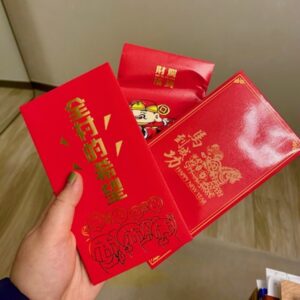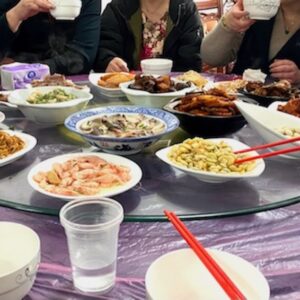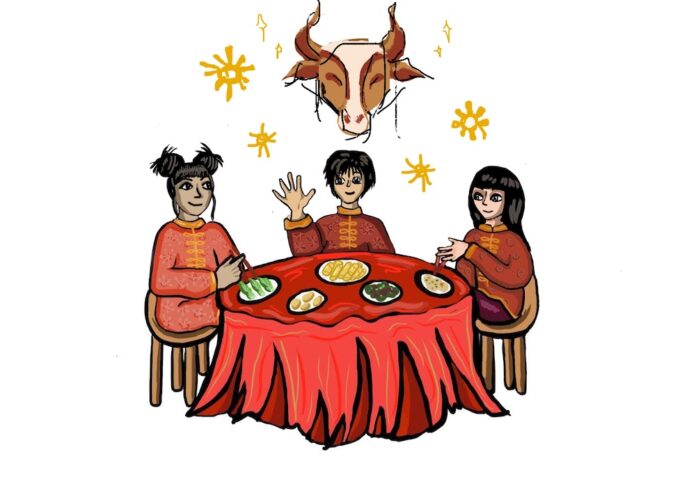Lunar New Year is a widely celebrated holiday in several East and Southeast Asian cultures, marking the beginning of the new lunisolar calendar year, which began Feb. 12. The holiday, also known as the Spring Festival, is the largest annual human migration in the world, with hundreds of millions of people in China alone traveling home for the occasion every year. However, COVID-19 has caused many Lunar New Year celebrations to be widely restricted in major cities around the world. Nevertheless, Occidental community members who celebrate Lunar New Year have adjusted their traditions and customs amid the pandemic’s health and safety restrictions.
According to American Studies professor Xiao-Huang Yin, the Spring Festival originated from ancient, rural China as a celebration of a new year of farming. Over time, elements from Confucianism, Zen Buddhism and other cultures enriched the tradition and transformed it from a farming holiday to a familial holiday in several countries. Yin said spending time with family on Lunar New Year’s Eve is the most important of all traditions.
“That’s always the centerpiece — New Year’s Day is a family’s day. It’s a celebration together with your loved ones,” Yin said. “That’s why you have this Chinese saying … ‘It doesn’t matter if you are rich or poor, you always return home for the New Year’s Day,’ because that’s a time for you to be with your loved ones.”
The Star, Malaysia’s national newspaper, encouraged people to stay home for Lunar New Year. In response, Tzu Kit Chan (sophomore), a student from Malaysia, and his extended family hosted Zoom meetings to celebrate safely. Chan said he enjoyed his family’s smaller celebration this year, despite the restrictions on the size of gatherings.
“Every Chinese New Year, I’m pretty used to like 60 people cramming into my house, and right now, it’s just 10,” Chan said. “I guess I kind of like it too because I get to talk to my extended relatives in a more intimate setting, in a closer, quieter setting.”
Jordan Fang (sophomore) also said an important custom for celebrating Lunar New Year is the exchanging of hong bao — red envelope packets filled with money. According to Fang, elders give the envelopes to younger and unmarried family members. Media Arts & Culture (MAC) professor Vivian Lin said the Lunar New Year is a very cash-based celebration as elders distribute money to express their love.

“Hearing about this [anti-Asian] violence, especially during the Lunar New Year, when a lot of elderly are carrying cash to give out to their families is just really, really heartbreaking,” Lin said.
Lin said she was particularly struck by the story of Vicha Ratanapakdee, 84, a Thai man who died after being attacked in the Anza Vista neighborhood in San Francisco, close to where Lin grew up.
“That really hit close to home because [Ratanapakdee] was just taking a morning walk in his neighborhood, which is what my dad does every day,” Lin said. “[The violence] ties into a lot of anti-Asian sentiment fueled by the Trump administration, especially with regards to his referring to coronavirus as the China virus.”
With a 1,900 percent increase in anti-Asian violence since the start of the pandemic, and more recently, several attacks on Asian elders in the recent weeks leading up to Lunar New Year, many Asian Americans celebrated the holiday with tense feelings. Still, Occidental community members have been able to find comfort while celebrating the holiday with their loved ones.
According to Yin, different cultures’ traditions for celebrating Lunar New Year vary, but in addition to family, most center on food.
For Fang, a San Diego-based Taiwanese student, preparing and eating food with family is the most important part of Lunar New Year. Fang said he and his family spent the entire day cooking to prepare their Lunar New Year meal.

“It’s a huge process, but that’s part of the joy of the Lunar New Year eve meal,” Fang said. “It’s everyone coming together, putting in the work to make a meal. And whenever we sit down for that, we know that it’s something everyone has contributed to. Just that fact makes it all the more special.”
Lunar New Year is celebrated for 15 days and different cultures prepare different food dishes for each day. Growing up in her Taiwanese-American household, Lin said she recalls how on the first day of Lunar New Year, her family would respect her father’s Buddhist beliefs and not eat any meat on the first day of celebrations.
According to Chan, his Taoist family also prepares a lot of vegetarian dishes. Chan’s grandma often made poon choi, a Cantonese dish famous among monks. On the second day, Chan’s family transitions to more meat-based dishes.
Originally from Inner Mongolia, Candy Wu (first year) said her Lunar New Year table is usually filled with dumplings, noodles, steamed fish and other kinds of meat. Liang Zhu (first year), who is from southern China, said her family feasts on fish such as fried cod or small yellow croaker, one or two soups — usually chicken — braised pork and wontons, but this year, her family celebrated by eating hot pot instead. For Kristen Tang (sophomore), a student from Singapore, abalone, dong gu (mushrooms), dumplings and crackers with salmon decorate her family’s table on Lunar New Year.
Other Lunar New Year traditions revolve around cultural and religious customs, according to Yin.
Lin said Taiwanese customs she practices for good luck include cleaning her house, wearing new clothes and shoes, not washing her hair for three days, leaving the lights on and buying decorations for her home that she must throw away once the celebrations are over.

For Fang, an important Taiwanese tradition in his family is traveling to the altar or cemetery where his ancestors are buried in Taiwan in order to make offerings, burn incense, pray to his ancestors and clean their shrine. This year, Fang and his family made their offering to their family shrine at home this year. Fang said he, like other Asian Americans who celebrate the holiday, was sad that there were some parts of Lunar New Year that he could not partake in this year, but he was able to find joy in celebrating with his family.
“If anything, it makes the things that we can do, all the more special,” Fang said. “With that distance and lack of things that we are able to do — at least, that I’m able to do — having that family meal, sharing that hong bao or praying to the ancestors makes everything a lot more special.”
![]()




































